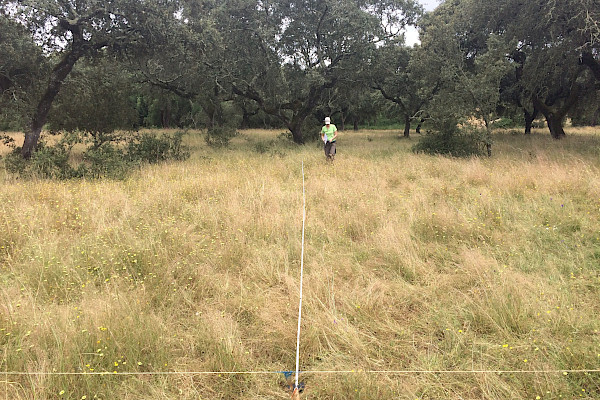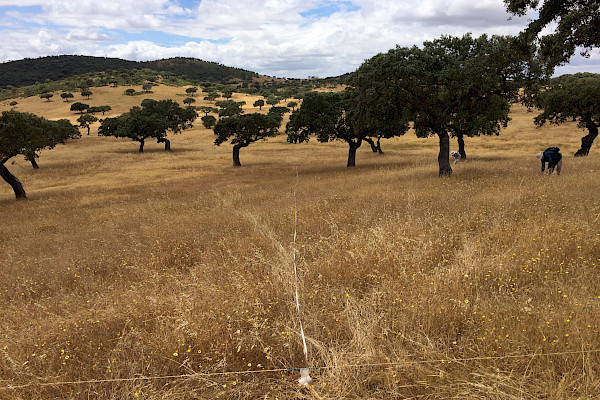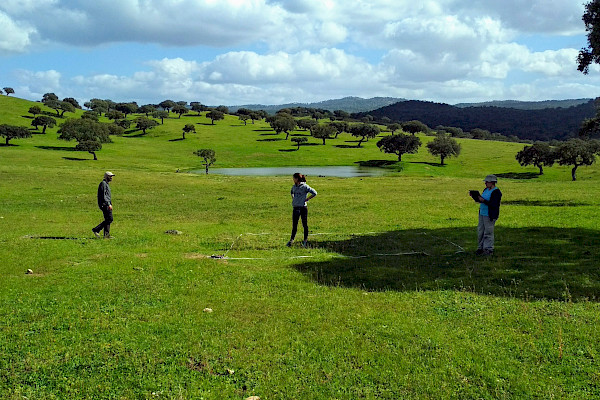Study published in “Science” concludes that the increase in grazing pressure threatens global drylands ecosystem
The team of over 100 researchers conducted a unique global monitoring that included 326 drylands located in 25 countries
English version: Diana Taborda
An international study (now published in the prestigious Science), with the participation of Alexandra Rodríguez, Helena Castro and Jorge Durán, researchers from the Centre for Functional Ecology of the Faculty of Sciences and Technology of the University of Coimbra (FCTUC), concluded that the increase in grazing pressure threatens grazing in drier areas.
The team, which includes over one hundred scientists, has conducted a unique global monitoring that included 326 drylands located in 25 countries on 6 continents, concluded that grazing can have positive effects on ecosystem services, particularly in areas that are cold and rich in plant species. However, these effects become negative in warmer climate regions with less plant diversity.
The data collected also show that the interactions observed between climate, soil, biodiversity and ecosystem services vary according to grazing pressure. According to the scientific paper, the amount of carbon decreased and soil erosion increased as the climate became warmer under high grazing pressure, something that was not observed under low pressure. Thus, these results suggest that dryland responses to ongoing climate change may depend on the type of management at the local level.
Study leader Fernando Maestre, researcher at the Universidad de Alicante and Director of the Lab “Dryland Ecology and Global Change” explains that “We used standardised protocols to assess the impacts of increased grazing pressure on the ability of drylands to provide nine essential ecosystem services, including soil fertility, forage/wood production and climate regulation. This has allowed us to characterise how the impacts of grazing are dependent on climate, soil and biodiversity conditions typical of each location, and to gain additional information on the role of biodiversity in the provision of ecosystem services essential to human livelihood.”
Researchers from the Centre for Functional Ecology (FCTUC), co-authors of this scientific article, collected and processed samples in two locations in Alentejo, specifically at the Freixo do Meio and Contenta farms. Helena Castro highlights that "the impact of grazing varies depending on the combination of soil and climate conditions and vegetation diversity, which makes it important to take into account the conditions of each arid zone when defining grazing and pasture management plans". Portanto, considera Alexandra Rodríguez says that "this study is particularly relevant for Portugal, where drylands are mostly used for grazing and already represent more than a third of its territory, but they will cover a lot more land in the future due to climate change".
The authors of this research also observed that the diversity of both vascular plants and herbivorous mammals is positively linked to the provision of essential services, such as carbon storage. These services play a key role in climate regulation, clearly showing the importance of protecting the biodiversity of global drylands as a whole.
“The findings of this study are of great relevance for achieving more sustainable grazing management, as well as for establishing efficient management and restoration actions aimed at mitigating the effects of climate change and desertification in drylands”, the authors conclude.
This work was developed in the scope of the BIODESERT project, granted by the European Research Council (ERC) Consolidator Grants Programme to Fernando T. Maestre.
The scientific article “Grazing and ecosystem service delivery in global drylands” is available at: https://www.science.org/doi/10.1126/science.abq4062



